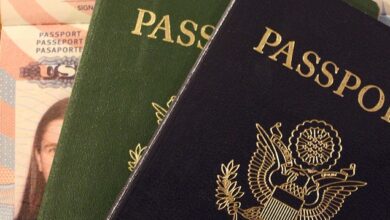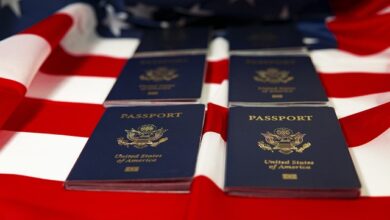How to Apply for a Family Reunification Visa

Family reunification visas are designed to allow family members of individuals who are legally residing in a foreign country to join them. The process can vary significantly depending on the destination country, but there are general steps and requirements that apply broadly across many nations. Below is a comprehensive guide on how to apply for a family reunification visa.
1. Understand Eligibility Requirements
Before applying, ensure you meet the eligibility criteria set by the destination country. Common requirements include:
- Sponsorship : The person sponsoring your application (usually a spouse, parent, or child) must be a legal resident or citizen of the destination country.
- Relationship : You must prove your relationship with the sponsor through official documentation, such as marriage certificates, birth certificates, or adoption papers.
- Financial Stability : The sponsor may need to demonstrate they have sufficient income or savings to support both themselves and their family members.
- Accommodation : Proof of adequate housing for the incoming family member(s) might also be required.
Each country has specific rules regarding which family members qualify (e.g., spouses, children under 18, elderly parents), so it’s important to check these details carefully.
2. Gather Required Documents
Preparing the necessary documents is a crucial step in the application process. Typical documents include:
For the Applicant:
- A completed visa application form.
- Valid passport with at least six months’ validity.
- Recent passport-sized photographs meeting the country’s specifications.
- Proof of relationship with the sponsor (marriage certificate, birth certificate, etc.).
- Medical examination results (if required by the destination country).
- Police clearance certificate or criminal background check (depending on the country).
- Travel itinerary or flight reservation (in some cases).
For the Sponsor:
- Proof of residency status (residence permit, work permit, or citizenship document).
- Financial statements showing ability to support the applicant (bank statements, payslips, tax returns).
- Lease agreement or proof of ownership of accommodation.
- Letter of sponsorship confirming willingness to support the applicant financially and provide housing.
3. Submit Your Application
Once all documents are prepared, follow these steps:
- Choose the Right Embassy/Consulate : Identify the nearest embassy or consulate of the destination country where you plan to submit your application.
- Schedule an Appointment : Many embassies require applicants to schedule an appointment online before visiting in person.
- Pay the Application Fee : Family reunification visas often come with processing fees, which vary by country and type of visa. Payment methods differ—some accept cash, others only credit cards or bank transfers.
- Submit Supporting Documents : Bring all original documents along with copies when attending your appointment.
4. Attend an Interview (If Required)
Some countries conduct interviews as part of the application process. During the interview, officials may ask questions about:
- Your relationship with the sponsor.
- Your intentions upon arrival in the destination country.
- Your financial situation and plans for integration.
Be honest and thorough in your responses, providing any additional information requested during the interview.
5. Wait for Processing
Processing times for family reunification visas vary widely depending on the country and workload of the embassy/consulate. It could take anywhere from a few weeks to several months. Some countries offer expedited services for an extra fee if time is critical.
While waiting, avoid making non-refundable travel arrangements until you receive confirmation of approval.
6. Upon Approval
If your application is approved, you will receive your visa. Before traveling:
- Double-check entry requirements (e.g., whether you need to register upon arrival).
- Familiarize yourself with local laws and customs.
- Prepare for any mandatory registration processes once you arrive in the destination country.
7. Common Challenges and Tips
- Documentation Errors : Ensure all documents are accurate and up-to-date. Missing or incorrect information can delay or even result in denial of your application.
- Language Barriers : If applicable, translate all documents into the official language of the destination country using certified translators.
- Stay Organized : Keep copies of all submitted documents for future reference.
- Seek Professional Help : For complex cases, consider consulting an immigration lawyer or agent specializing in family reunification visas.
Country-Specific Examples
Example 1: United States
- Eligible family members include immediate relatives (spouses, minor children, parents of U.S. citizens over 21 years old).
- File Form I-130 (Petition for Alien Relative) with USCIS.
- Undergo medical exams and security checks.
Example 2: Canada
- Use the “Sponsor a Family Member” program.
- Complete forms IMM 5409 and IMM 5476.
- Demonstrate financial capability via Notice of Assessment (NOA).
Example 3: Germany
- Prove stable income and sufficient living space.
- Provide German translations of key documents.
- Attend an in-person appointment at the German embassy.



